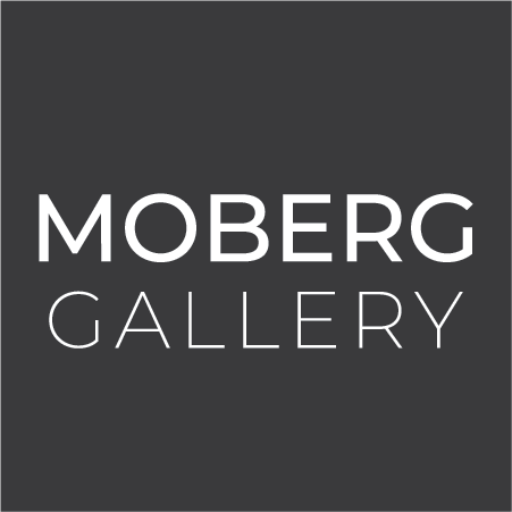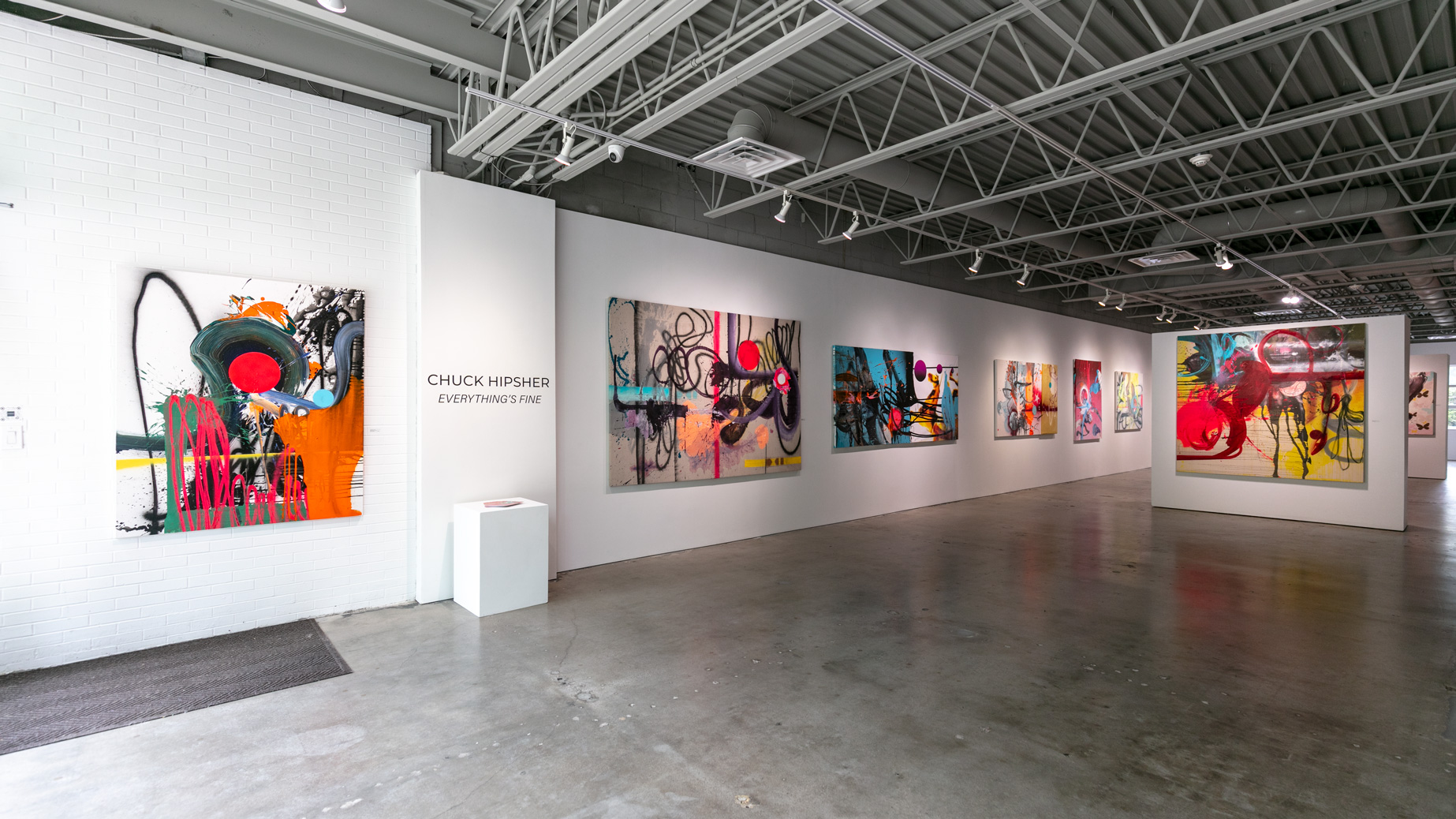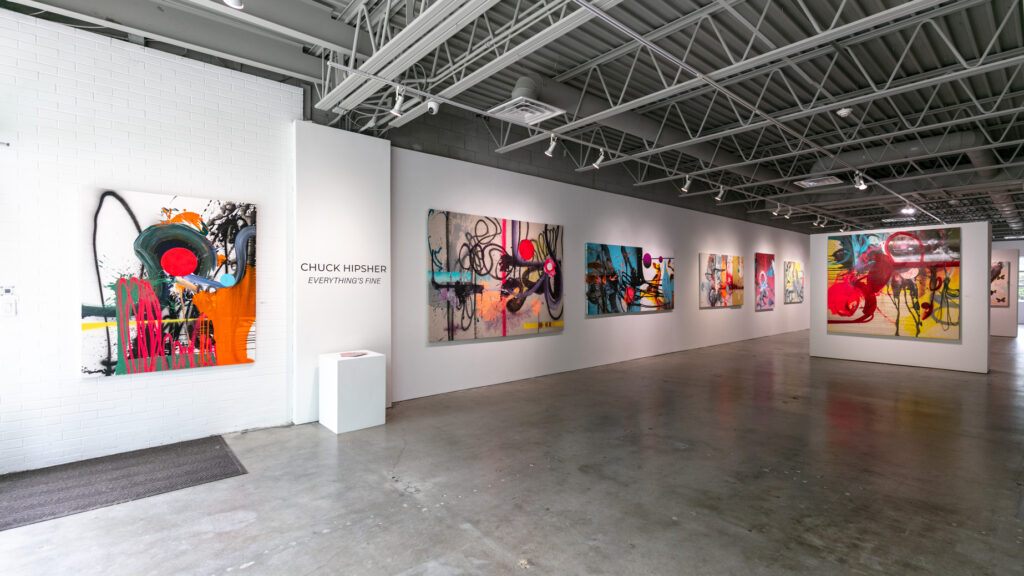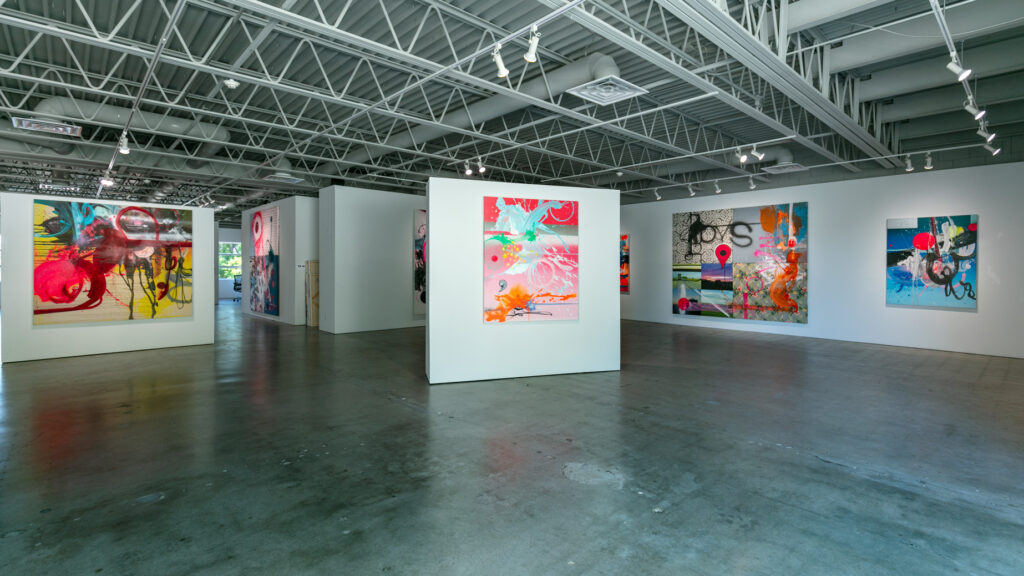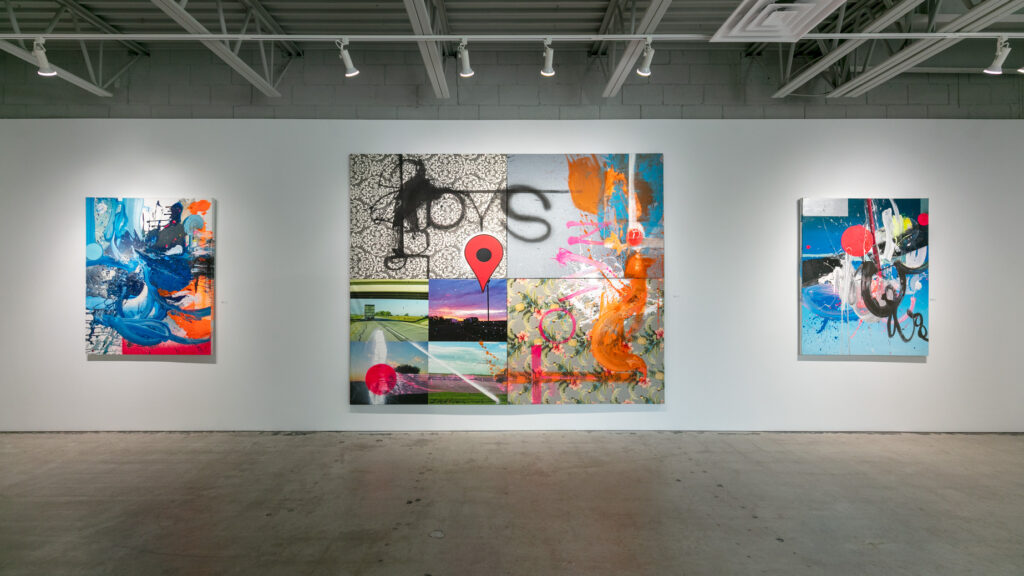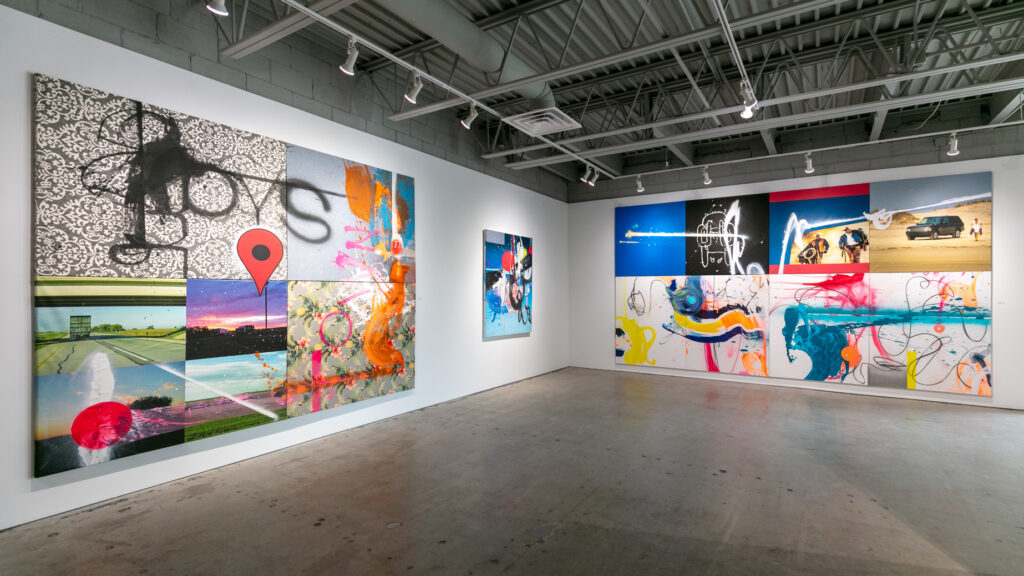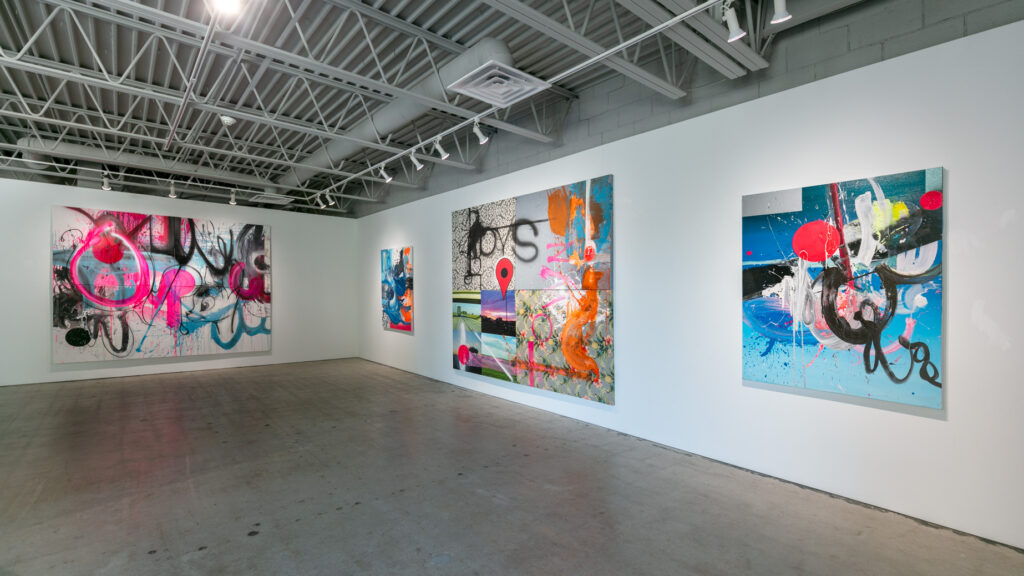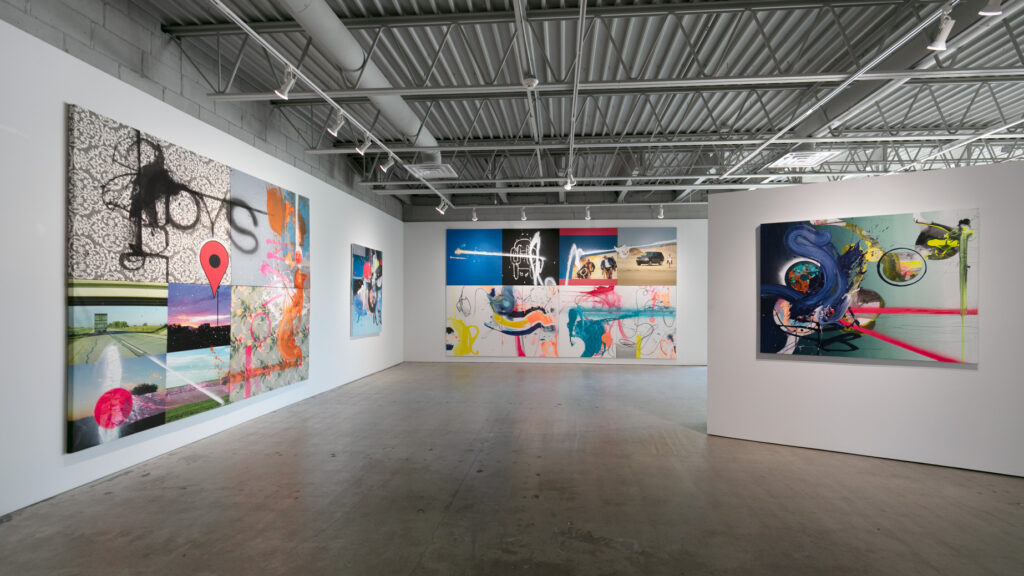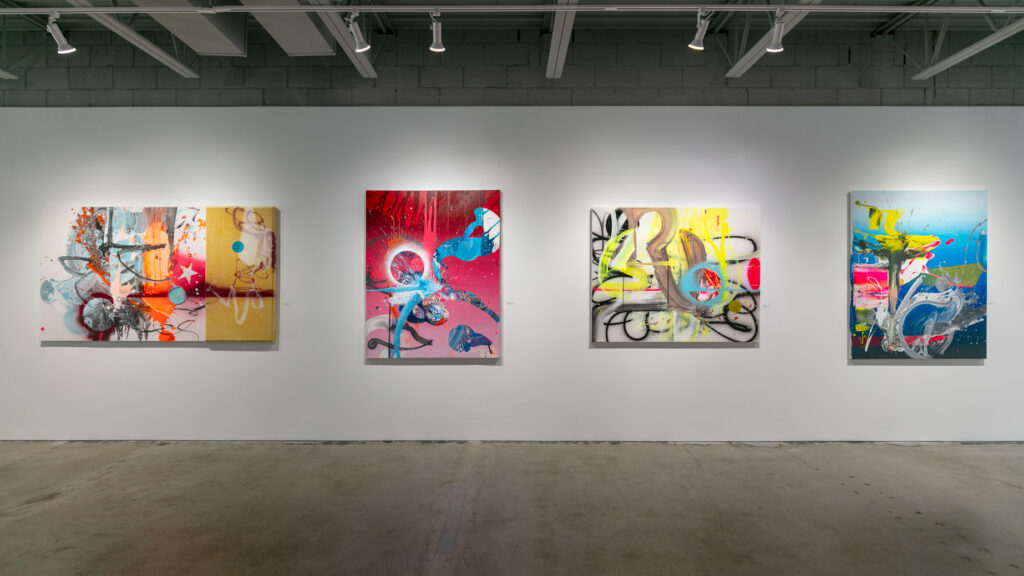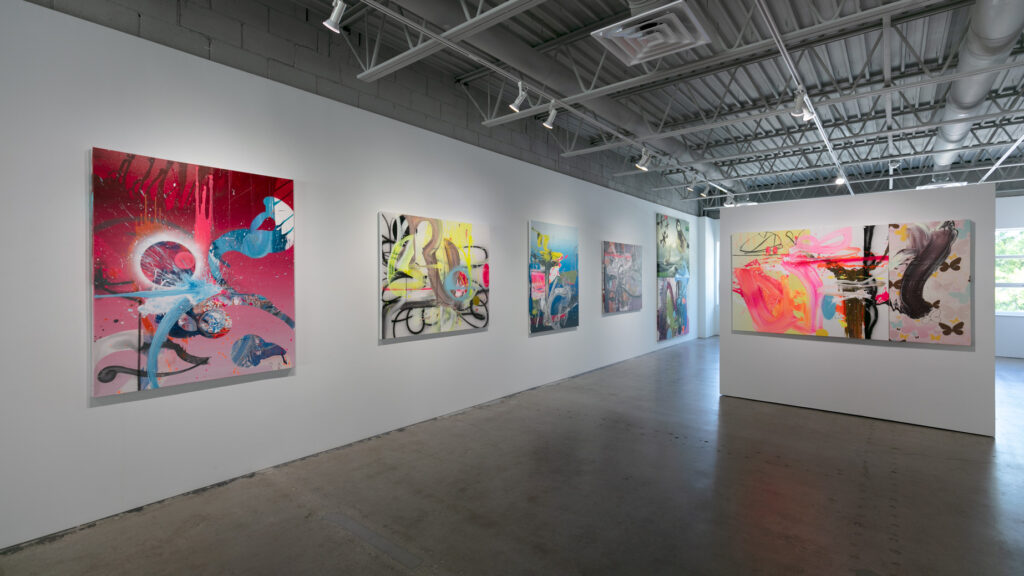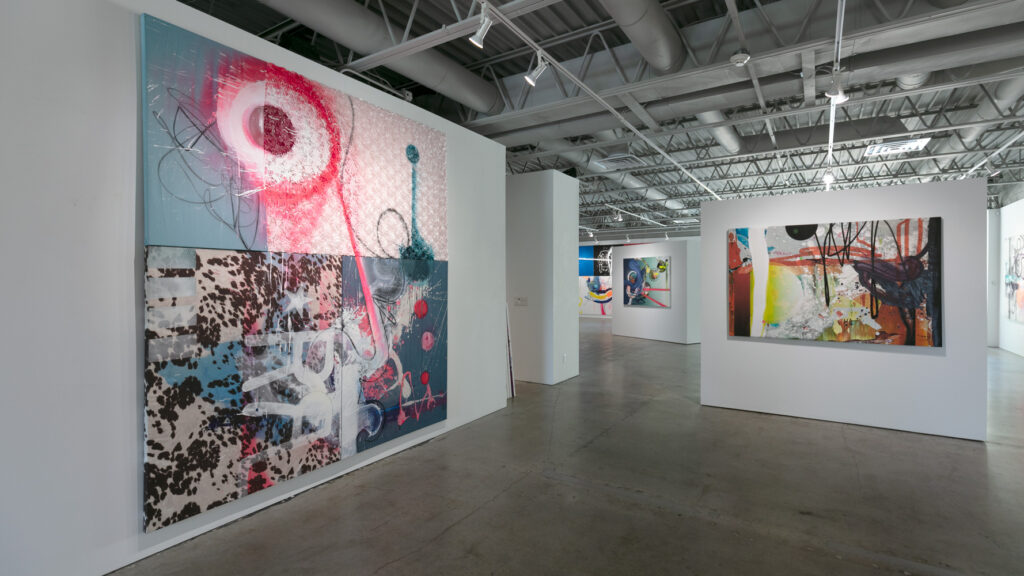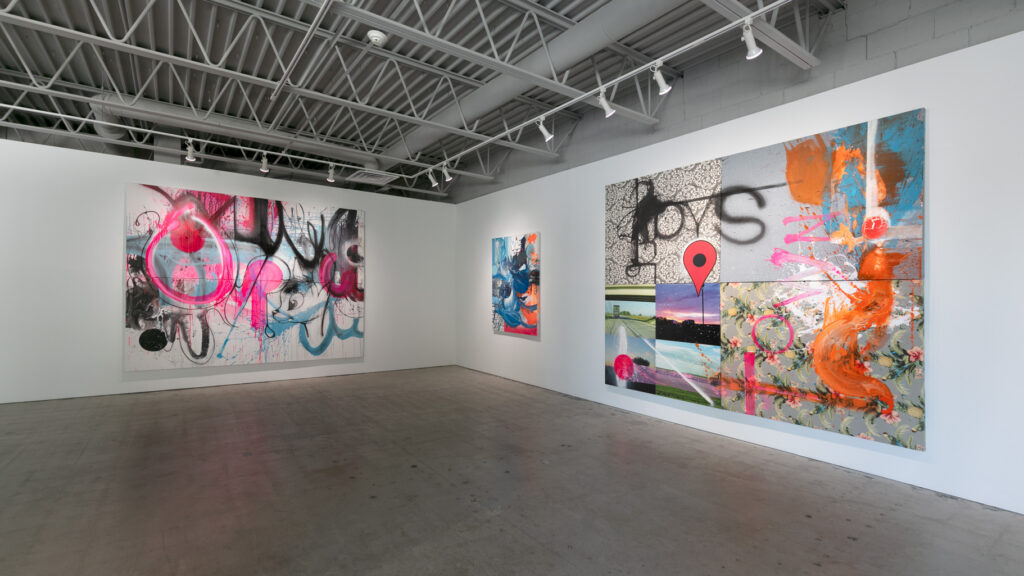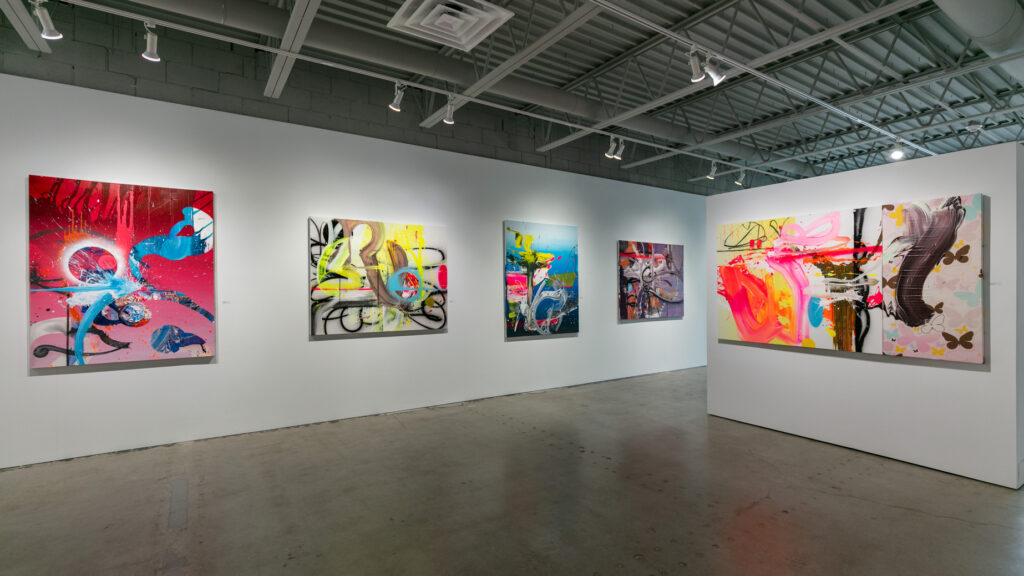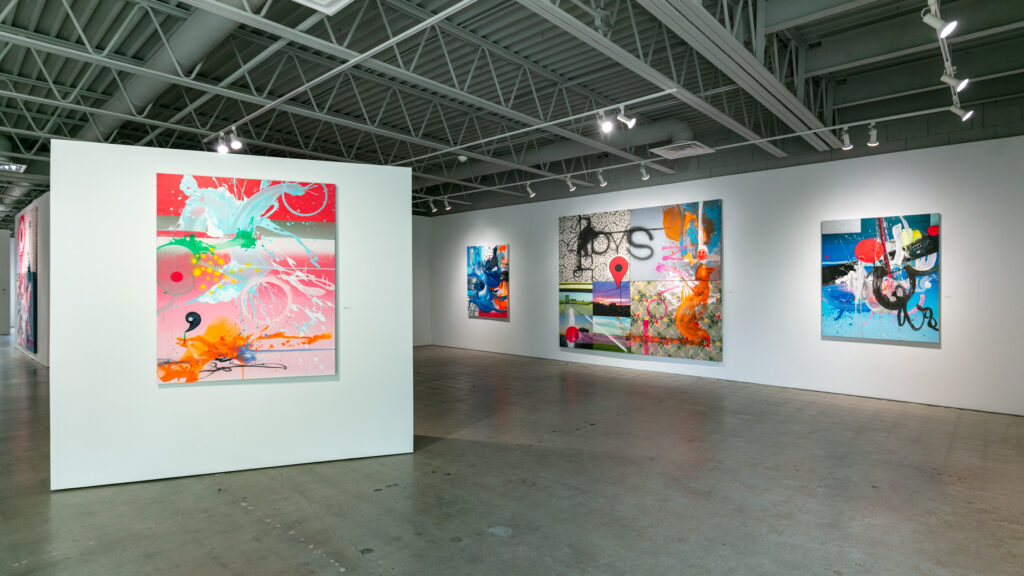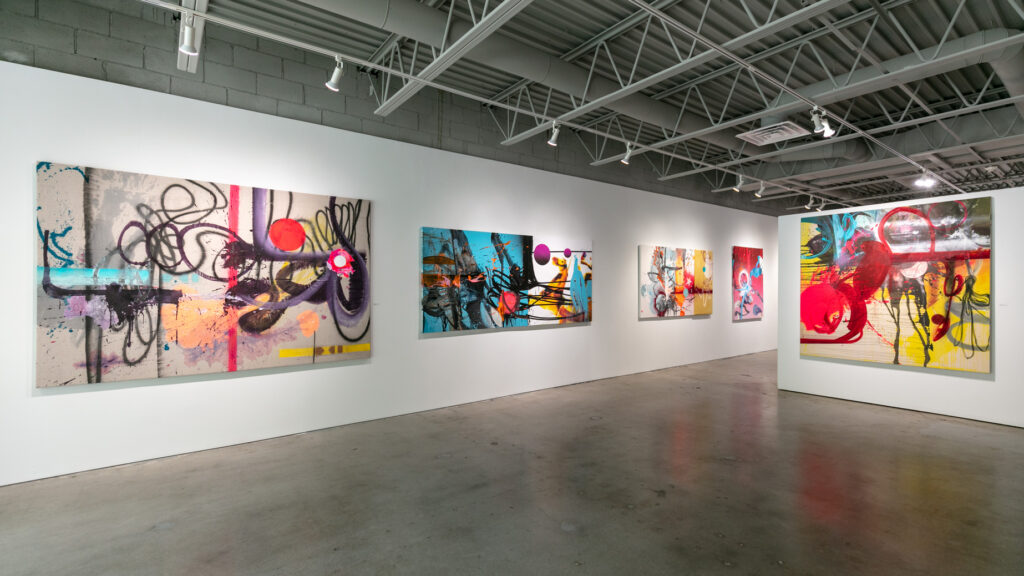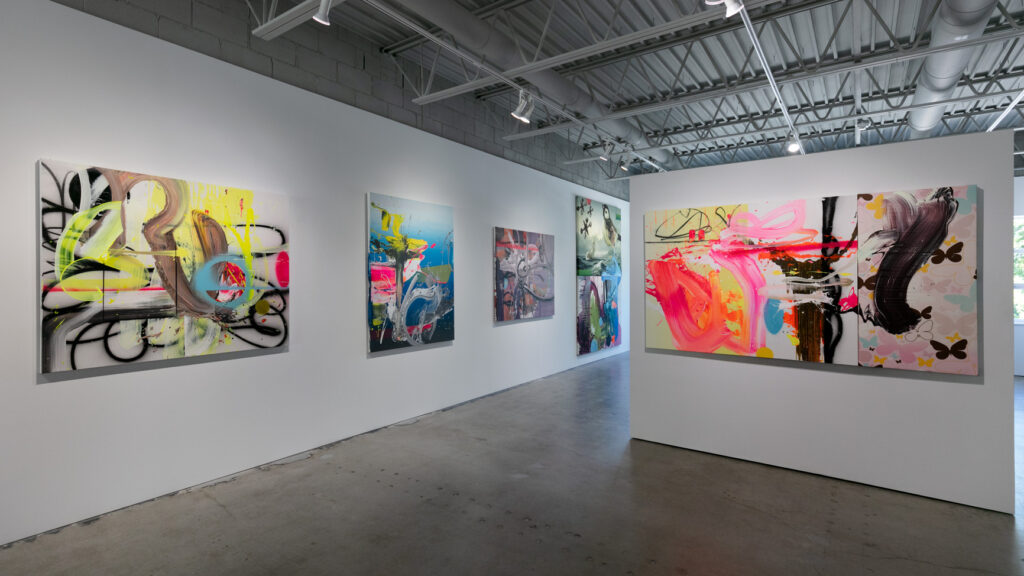Text by Nick LaPole | VIEW IMAGES
In Chuck Hipsher’s latest exhalation “Everything’s Fine”, patrons are invited to breathe in a collection of paintings that jostle images, texture, and gesture together. Those familiar with his work will find his paint language on full display, but that language is complicated by the sheer variety of surfaces and pictures plucked from Chuck’s personal archive. Simultaneously independent and honorific, Chuck presents mixed-media paintings that house his own history and facilitate our collective stories.
The show is, above all else, a path forward. In his artist statement, Chuck is keen to mention a crisis to action that, as a gestural abstractionist, is quite a dire thing. It’s dire for all of us, in fact, painter or no, especially in the context of now. Action today is muddied by endless feeds and dopamine traps. The future is left murky by an ambivalence toward each other and a warping of the past. It’s a state that apprehends us, and whatever stands still suffers a fate worse than death.
Yet Chuck Hipsher is deeply aware of this anxiety and his work is, perhaps subconsciously, a plan to face it. Sure, the sentiment knowingly oscillates among despair, flippancy, and confidence, but that’s okay! Everything’s fine.
Consider “Blarney Stone.” A toolkit of painterly effects populate the canvas with a sure-fire rhythm fit for a conductor. The orchestral score of sinewy strokes crackle pink-to-green with each swish of the baton-like brush. An instant like this repeats in the center, thicker and lethargic, and cradles the neon orb situated there. It’s a stone, perhaps, or a sun featured alongside a blue moon and a yellow horizon, thus elevating the personal endeavor, a gift beyond gab, to an act of cosmic proportions.
Much of the work in “Everything’s Fine” follows this procession, where incremental decisions of color and application compound into a large-scale piece and a story of its making. To act despite anxiety is key, and to work unmediated is the consequence of constant application. That’s how you get there. Whether a canvas or a stage, when life’s concert is in full swing, always remember to keep moving.
So Chuck Hipsher moves, and the painting proceeds, even if there are flare-ups among the instruments. “Unforming” demonstrates as much. It revels in the overwhelm and, as if pride’s reaction to a slight, threatens a total meltdown. It’s a stalwart machine, a red engine of sorts, but one that has clearly ruptured. A paint skin falls loose from its fog-white afterimage. Condensation drips defy gravity as they rise, whilst a spit-take of white and blue rocket off and pour out of a wound that could simply be a jab to the side or, more severely, a puncture to the state of our Union.
Readings like that and elsewhere in this show demonstrate the need for flexibility, whether that be to interpretation or to the material applied. Chuck exemplifies this with his mark-making and surface selections. They may appear disparate initially, but they reveal an unexpected balance only when in combination with each other. The variety, as it so happens, is key. Traditional gesso squares up to raw canvas; wooden boards juxtapose with papercraft. Edges may shift from stiff to voluminous but, given the contents on display, that is to be expected. Even when the efforts seem contradictory, the sentiment is clear: stay limber.
See “Blupolar”. Two-thirds canvas, one-third plywood. Both settings take to the splashes and strokes of prussian blue, but the sheen is distinct between them. They are two separate workspaces; a tabletop next to a computer screen. Blue/maroon coffee spills stain the former while the yellow/orange/baby blue color key sits there expectantly on the latter. Messes and parameters. They define a long day’s work, but the gestural effort on top is what binds them.
These paintings are amalgamations of thought and feeling invested into tactile decisions, one after the other. This has defined Chuck’s practice for a while now, but “Everything’s Fine” intrigues in how it applies raw symbols and imagery through that same machination. The sensation is still translated, but the scaffold inherent to a recognizable depiction remains. That dual role allows for new handholds for the audience to climb in and parse on their own or, better yet, discuss together. Road collages, graffiti-illustrations, mundane and spiritual signs exist with the same tactility as felt, tablecloth, and chambray. In this way, Chuck takes all kinds, which invite the viewer to apply that and more so to their analysis.
“Ascension,” for instance, displays a vertical hierarchy within the composition. There is the botonee cross at the bottom, along with a wash of sunset hues at the top. The cross is a bold graphic display of faith or heraldry, alluding to good works and bitter crusades. The actions above could just as readily apply to acts of faith or violence. It’s a spectrum of impetuses that refuse a simple resolution.
“Ralph,” instead, is an honorific between creatives, between Chuck Hipsher and Ralph Lauren. Chuck pays homage to the designer in methods he knows best, with fabric and patterns that recall Lauren’s work and, as if a contribution, binds them with the thread of his mark. It’s a careful arrangement, as if to acknowledge Lauren’s watchful presence over the proceedings, that is keen to recognize the legacy hand in hand with the current moment.
“Boys Town,” by comparison, looks at the legacy with a somber acknowledgement. In it, Chuck recalls his father and uncle. They initially intended a venture together before his uncle passed and… well, life marched on. Chuck pinpoints that tragedy exactly to the physical location on the map in a modern way, which brings attention to his point of view and the risk of endless rumination. The piece is both a reminder of what could’ve been and a prayer of thanks at what became instead. No matter the loss, his father persisted; Chuck’s life and work, energetic and individual as ever, is forever indebted to that.
The concrete, the literalness of our joys and pains, finds a bedfellow in abstraction, thereby underscoring life and life’s work within Chuck’s studio practice. The state of the world may threaten, but it’s gratitude that keeps the threat at bay and stabilizes the drive for creation. Chuck acknowledges as much! He pursues recognition and strives for a degree of contentment, but he also understands that that is the artist’s way. By including his archive so overtly alongside gesture and surface considerations, Chuck breaks down his images and their presumptions so that a trove of audience inferences can find a home within his paintings. It’s an effort that makes private journeys more manageable, that makes the direness of today a bit more measured, and that makes future conversation possible. Just remember… “Everything’s Fine.”
Stop by to see the work in person at Moberg Gallery. It will be on view until September 4th.
Chuck Hipsher on his painting, UNMADE
Chuck Hipsher on his painting, TIME FOLD
Exhibit Images
